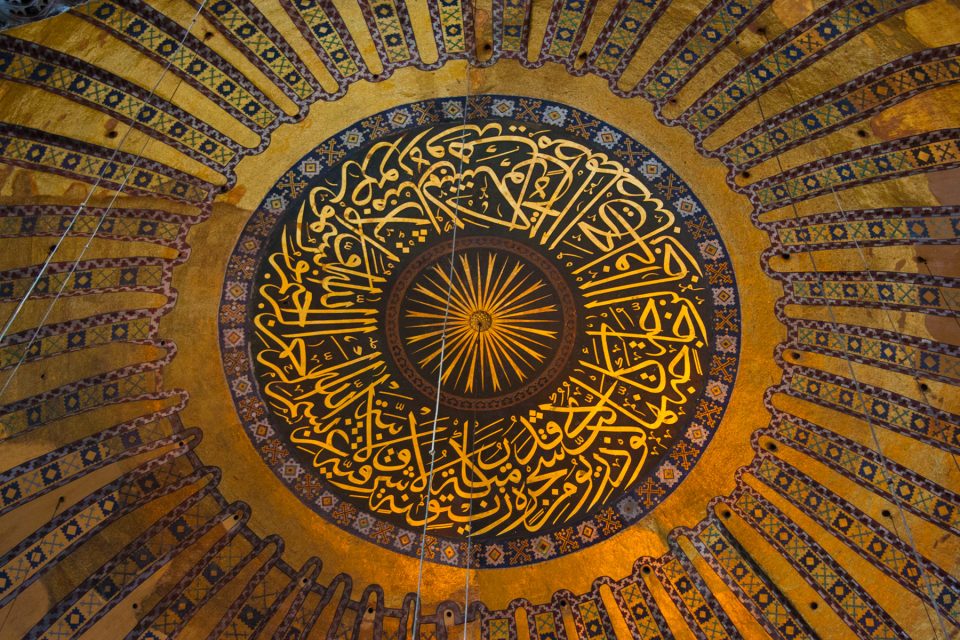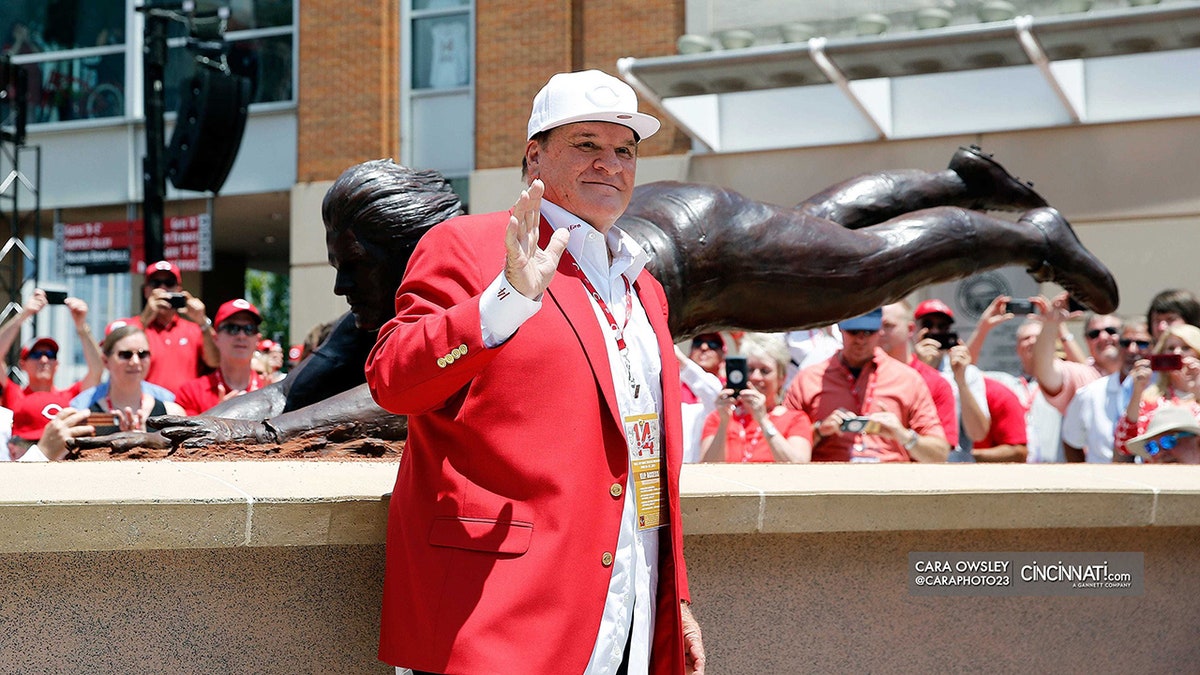Hagia Sophia: From Byzantine Glory To Ottoman Grandeur And Beyond

Table of Contents
The Byzantine Era: A Golden Age of Architectural Marvel
Construction and Initial Design
Construction of the Hagia Sophia began in 532 AD under the ambitious rule of Emperor Justinian I. Master architects Anthemius of Tralles and Isidore of Miletus were tasked with creating a structure that would surpass all others, a feat achieved through groundbreaking Byzantine architecture and innovative dome construction. The sheer scale of the project and the sophistication of its design were unprecedented.
- Immense Dome: The Hagia Sophia's central dome, an astonishing feat of engineering, boasted a diameter of 107 feet (32.6 meters), a record for its time.
- Lightweight Materials: To support the massive dome, lightweight materials like brick and pumice were employed, showcasing advanced building techniques.
- Pendentives: The ingenious use of pendentives, curved triangular sections, allowed the dome to be placed atop a square base, a crucial architectural innovation.
- Immediate Impact: Upon completion in 537 AD, the Hagia Sophia instantly became the architectural marvel of the Byzantine Empire, showcasing the empire's wealth and power.
Artistic and Religious Significance
The Hagia Sophia served as the focal point of the Eastern Orthodox Church for nearly 1,000 years. Its interior was lavishly decorated with breathtaking mosaics and icons, representing the pinnacle of Byzantine art. These religious images conveyed profound theological meanings and played a crucial role in the worship experience.
- Famous Mosaics: Depictions of Christ Pantocrator, the Virgin Mary, and other biblical figures adorned the walls and ceilings, embodying the essence of Byzantine artistic style.
- Impact of Religious Imagery: The placement and style of the mosaics and icons were carefully considered to enhance the spiritual atmosphere and communicate religious narratives effectively.
- Symbolism in Art: Each detail, from the colors to the figures depicted, held symbolic meaning and reinforced the power of the Eastern Orthodox faith.
The Hagia Sophia as a Symbol of Byzantine Power
The Hagia Sophia was far more than just a church; it was a potent symbol of Byzantine imperial power and political significance. Its immense size and grandeur served as a visual display of the empire's wealth, strength, and religious authority.
- Imperial Ceremonies: Grand imperial ceremonies and religious rituals were held within the Hagia Sophia's walls, reinforcing its role as the center of Byzantine life.
- Religious and Secular Convergence: The Hagia Sophia's importance extended beyond religious functions, serving as a meeting place for political and social elites.
- Architectural Propaganda: The sheer scale of the Hagia Sophia was, in itself, a powerful statement, surpassing all previous buildings in size and magnificence.
The Ottoman Conquest and Transformation into a Mosque
The Fall of Constantinople and Ottoman Rule
The Ottoman conquest of Constantinople in 1453 marked a turning point in the Hagia Sophia's history. Under the rule of Sultan Mehmed II, the church was converted into a mosque, reflecting the changing religious and political landscape.
- Conversion to Mosque: The transformation was swift, and the Hagia Sophia was soon adapted for Muslim worship.
- Architectural Changes: Several changes were made to accommodate Muslim prayer, such as the addition of minarets.
Architectural Adaptations and Islamic Influence
The Ottoman Empire integrated Islamic architectural elements while preserving the structure's core Byzantine features. This harmonious blend of styles created a unique architectural fusion.
- Minarets: Slender towers, or minarets, were added to the exterior, signaling the Hagia Sophia's new role as a place of Muslim worship.
- Mihrab and Mimbar: A mihrab (a niche indicating the direction of Mecca) and a mimbar (a pulpit from which the imam delivers sermons) were incorporated into the interior.
- Interior Decoration: The addition of Islamic calligraphy and other decorative elements further reflected the shift in religious function.
The Hagia Sophia as a Symbol of Ottoman Power
The Hagia Sophia’s conversion into a mosque and its subsequent use in Islamic ceremonies served to consolidate the Ottoman Empire's dominance and assert its religious authority. It became a pivotal symbol of Ottoman power and cultural influence.
- Religious Authority: Its use as a principal mosque reinforced the Ottoman Empire’s strength and the spread of Islam.
- Symbol of Conquest: The conversion demonstrated the Ottoman's victory over the Byzantine Empire.
- Cultural Integration: Despite the changes, the Hagia Sophia demonstrated a merging of architectural styles.
From Mosque to Museum and Back Again: A Modern History
Secularization and Museum Status
In 1935, under the leadership of Mustafa Kemal Atatürk, the Hagia Sophia was secularized and transformed into a museum, a decision that reflected the Turkish Republic's commitment to secularism and cultural preservation.
- Museum Transformation: The Hagia Sophia’s status as a museum made it accessible to a global audience, facilitating the appreciation of its historical and architectural significance.
- Preservation Efforts: The museum status focused on preserving the Hagia Sophia's diverse layers of history.
The 2020 Decision and its Implications
The 2020 decision to reinstate the Hagia Sophia as a mosque sparked significant controversy and debate, raising questions about religious freedom, cultural heritage, and the role of historical sites in modern society.
- Religious and Political Tensions: The decision was met with both support and opposition, highlighting the deeply rooted religious and political complexities surrounding the Hagia Sophia.
- Legal Challenges: The decision faced legal challenges, focusing on the balance between religious practice and the preservation of cultural heritage.
- Global Reaction: The global community reacted with diverse views, including concern over the potential implications for religious freedom and cultural heritage.
The Hagia Sophia Today: A Contested Legacy
The Hagia Sophia's current status as a mosque continues to be a topic of discussion, raising complex questions about its role in modern Turkey and the balance between religious identity and cultural heritage. Tourism remains significant.
- Ongoing Debates: The Hagia Sophia’s evolving role in the 21st century continues to be a topic of discussion and debate.
- Intercultural Dialogue: The Hagia Sophia's history presents a complex case study of historical change and cultural dialogue, reflecting its lasting impact.
- Preservation Efforts: Balancing religious use with preserving the site's historical layers remains a significant challenge.
Conclusion
The Hagia Sophia's journey, from its Byzantine beginnings as a magnificent cathedral to its current status as a mosque, embodies the dynamic interplay of empires, religions, and architectural innovation. Its enduring legacy is a powerful symbol of cultural exchange and the lasting impact of human creativity. This iconic structure, a masterpiece of Byzantine and Ottoman architecture, continues to inspire awe and contemplation. Explore the rich history of the Hagia Sophia and delve deeper into its architectural marvels and its evolving role in shaping world history. Discover more about this iconic structure, a testament to the Hagia Sophia's lasting impact on global culture.

Featured Posts
-
 Willie Nelsons New Album Oh What A Beautiful World
Apr 29, 2025
Willie Nelsons New Album Oh What A Beautiful World
Apr 29, 2025 -
 Diamond Johnson From Norfolk State To Minnesota Lynx Wnba Camp
Apr 29, 2025
Diamond Johnson From Norfolk State To Minnesota Lynx Wnba Camp
Apr 29, 2025 -
 Louisville Mail Delays End In Sight Says Postal Union Leader
Apr 29, 2025
Louisville Mail Delays End In Sight Says Postal Union Leader
Apr 29, 2025 -
 Son Of Falcons Dc Apologizes For Prank Call To Browns Draft Pick Shedeur Sanders
Apr 29, 2025
Son Of Falcons Dc Apologizes For Prank Call To Browns Draft Pick Shedeur Sanders
Apr 29, 2025 -
 Bmw And Porsche In China A Look At Market Share And Future Prospects
Apr 29, 2025
Bmw And Porsche In China A Look At Market Share And Future Prospects
Apr 29, 2025
Latest Posts
-
 Pete Rose Pardon Trumps Plan And Its Implications For Baseball
Apr 29, 2025
Pete Rose Pardon Trumps Plan And Its Implications For Baseball
Apr 29, 2025 -
 Donald Trump Calls For Pete Rose Pardon And Hall Of Fame Induction
Apr 29, 2025
Donald Trump Calls For Pete Rose Pardon And Hall Of Fame Induction
Apr 29, 2025 -
 The Pete Rose Pardon Donald Trumps Presidential Gamble
Apr 29, 2025
The Pete Rose Pardon Donald Trumps Presidential Gamble
Apr 29, 2025 -
 Will Trump Pardon Pete Rose The Impact On Baseball And Sports Betting
Apr 29, 2025
Will Trump Pardon Pete Rose The Impact On Baseball And Sports Betting
Apr 29, 2025 -
 Trump Promises Pete Rose A Posthumous Pardon Following Mlb Criticism
Apr 29, 2025
Trump Promises Pete Rose A Posthumous Pardon Following Mlb Criticism
Apr 29, 2025
